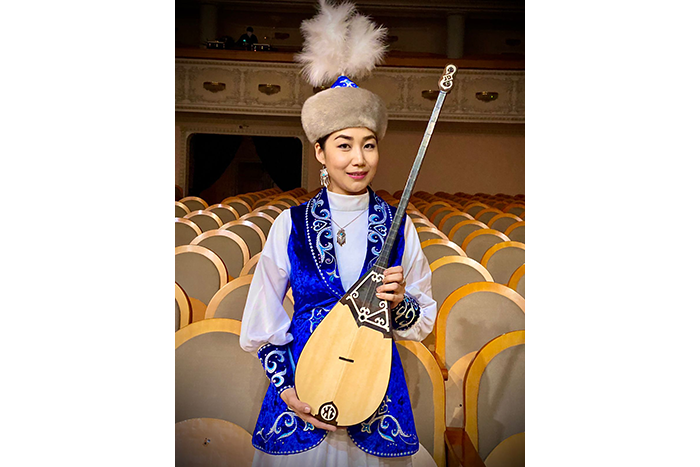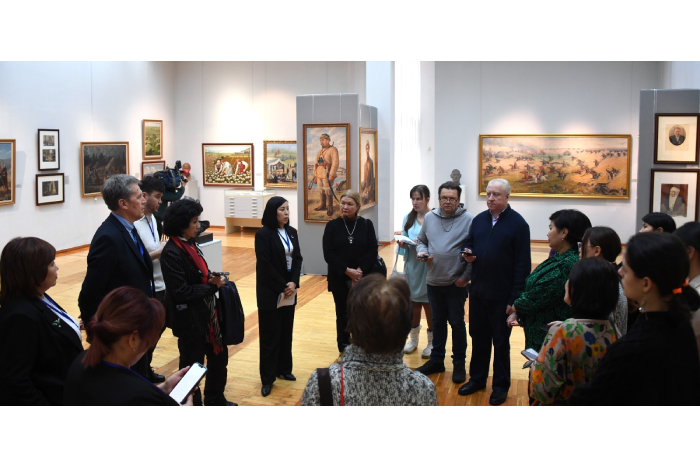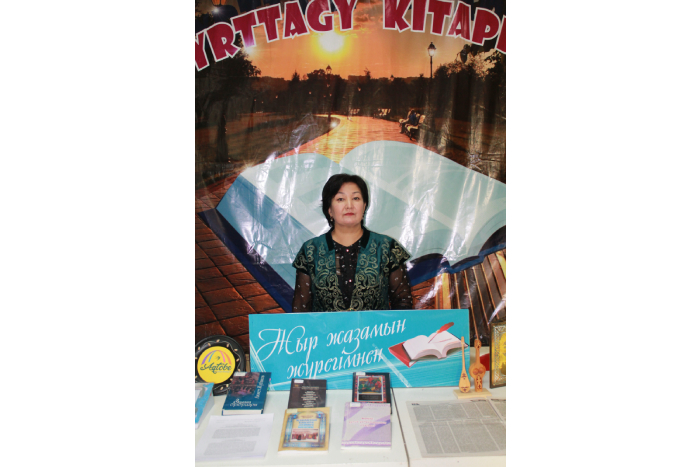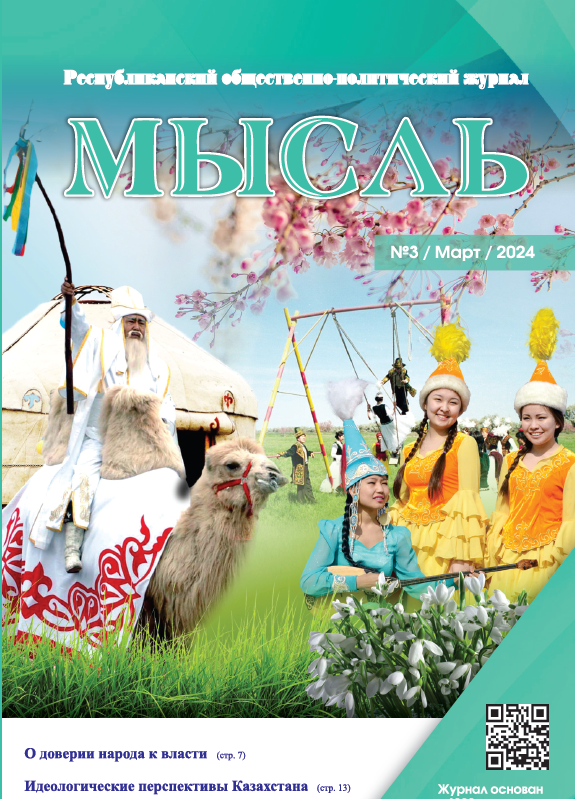- Культура
- 13 Декабря, 2019
Mythological text as an artistic way perception and interpretation of reality

Abstract: The mentioned article investigated the problem mythology as a diverse source of plot threads and as a specific artistic system with its own laws and loses structure.
Mythological text included a special mixture of figurative –expressive means characterized by different ways representation the author idea. In this sense the creativity of William Faulkner and John Hoyer Updise was analyzed by introduction of mythological motives in the realistic plot threads and enrichment of images by universal meaning and analogies.
Myth and new mythology trend as cultural and literary problem was considered by Russian and American Slavic Studies as multi-faceted system included the overall of organization plot deployment, specific logic structure and the process reader perception.
Key words: mythology, figurative –expressive means, symbolic prototype, temporal framework, ideological concept, American criticism, literary heritage ,philosophical belief ,romantic poetic, cyclical property, biblical mythology ,the system of images, artistic embodiment, archetype, ethical category, artistic stylization, mosaic structure integrity, spatio-temporal aspect, author concept, reader perception, narrative duality.
The definition of “myth and serious studies in the field of mythology takes place as important cultural and literary problem for many writers and scholars of the West Studies ’’The research works in mythology subject carried out under a variety of creative techniques, approaches and stylistic trends represented the artist dialogue with a number of religious and mythological system’’[1,191].
Myth attracted writers not only as a diverse source of plot threads, but about all, as a specific artistic system with its own lens and logic structure.
Myth became as epitome of timeless values, not connected with personal author creativity, because it proposed the universal way of discovering the main problem and contradictive sites of reality.
Myth is defined as ‘’common’’, general point of view, non-personal view of the world, which allowed and derived possibilities “to create a relatively strong position with regard to perception and projection of reality and circumstance of human being life and its artistic interpretation” [2,87].
Mythological text included a special mixture or figurative –expressive means, diversity their ideological structure and stylistically features. In this case, the using mythology in the artistic “context was characterized by different ways meaning representation the author’s plot idea and didn’t accept unilateral interpretation” [3,127].
Myth was considered as psychological and philosophical basic to reveal the specific archaic thinking and features of spiritual mentality in related of human being in current time.
According this approach, the global problems of contradictive and complicate sites of locality in the artistic text seemed to be solved by means of the myth.
In connection with above said belief scientist emphasized non - historical aspect of myth and conformed myth “as symbolic prototype of Universal evaluation and representation with its significance and value beyond all times” [4,13].
In American literature creativity of William Faulkner and John Hoyer Updise was considered by myth as important means of reflection historical aspect of human being existence and included the efforts expending its boundaries and temporal frame work to recognize and game accurate observation of Universal eternal modal of personal and social human being behavior
In this sense, the works of William Faulkner ‘’The Sound and Fury ‘’, ’’Go Down Moses’’ and the novel John Hoyer Updise ‘’Centaur’’ delivered the most fully reproduces of the ideological and philosophical concept of these authors.
By the end of the twenty century American criticism studies has developed a special branch professionally engaged in a detailed researching of heritage creativity of William Faulkner.
The volume researchers with respect to works of William Faulkner included hundreds pages of books, unique collection of materials of international conferences, thousands of articles and numerous sites of the internet, in rich highly respected scientific research centers participated.
Among the should be called the Centre for the study of Southern Culture at the University of Mississippi (‘’The Centre for the Study of Southern Culture, University Mississippi) and Centre of for Faulkner Studies of South East Missouri State University (‘’The Centre for Faulkner Studies in South East Missouri State University’’).
The foreign researchers G.Blotnera, X.Brumm, B.Brooks and others dedicated theirs works to forceful investigation to literary heritage of William Faulkner. The problem influence of myth on creativity of William Faulkner was discussed by Russian scientists J.Boldonova, G.Vetoshbina and others.
The major achievement in the study of literary creativity of John Hoyer Updise was presented by solid works of A.Broyard, R.Heyman, S.Robinson, D.Rampton and others [5],[6].
They fully reflected the latest approaches and methods to enlighten the significance and value of the artistic novels to modern America literature.
Concept features and universal meaning models was largely determined by mythological their artistic productivity in the process transmission ‘’the image circumstances and basic of human being existence, which was not be limited to certain social and historical frame work’’ [7,17].
Throughout the XX century the mythological poetic trends were also actively represented in the Western European and Russian literature [8].
Appeal to myth, namely its reinterpretation in the artist’s mind, was going in the ideological and aesthetic directions. The ideological reinterpretation of the artistic myth was based on its ‘’humanization process, represented as effort to create hero with his subjective feeling, religious and philosophical beliefs and individual human biography, which explained the way of his mind his manners and real condition of his life” [9,17].
Defined above literary trend was typical for creativity John Hoyer Updise and took place in his outstanding novels.
The aesthetic reinterpretation of myth in the XXth century was connected with a new appeal to the romantic poetic theory of Art proposed by the German philosopher Friedrich Shelling.
He determined that any artistic work must become ‘’new mythology’’ reflected the personal mythology of the author.
According this approach, any artistic work should be ‘’create a new world’’ based on the creative imagination broken and ‘’transformed the established common boarders of reality’’ [10,87].
Both of these traditions took an important place in the literary heritage of William Faulkner .Considering the artistic interpretation of the myth and the efforts inclusion of traditional plot threads into a modern, multi-level context, the modern researchers accepted the use of the category ‘’new mythology’’ as a special construction of the artistic text respect to adverted opinion with archaic, folk, literary and cinema. From this side mythology began to serve not only as fiction story, but also to keep control under its dynamic structure.
In this sense, the works of the writers became nonlinear plot, and the artistic time reflected cyclical property. The author “confirmed blurring line between personality and Universal, matter and spirit, animate and inanimate, and finally, most importantly, between the fiction text and she reality surrounding it” [11,14].
Artist’s philosophy and aesthetic were based on the new mythology trend as the process evaluation and understanding complex reality and its influence on the conscious and subconscious of human being.
From this side the method of artistic structure William Faulkner’s works “recalled the epic, genre, the interpretation of the evens by different narrators of the New and Old Testament” [12,4].
This way accepted the myth as attitude, as ‘’Universal reality forever and ever, despite the genre openness of many fiction, to create a whole system model of Universal and analyze its general character traits genre openness of many fiction, to create a whole system model of universal and to analyze its general character-traits” [13,57].
In the novel ‘’Centaur’’ by John Hoyer Updise mythology should be considered as the hard core of his its content.
The foundation author idea of the work concerned to the ancient myth of the noble contour Chiron, donated granted him immortality in favor of Prometheus. In accordance with this view the myth revealed the importance of author idea of artistic conflict unfolding in the tedious human being existence.
The main theme of “Centaur” by William Faulkner was developed by the constant contrast of real and mythological level, which emphasized the decline, decay and degeneration of public and private human being life.
The Neo-mythology as aesthetic approach in the creativity of William Faulkner was occupied as a special effective way of poetics and evaluation shades of reality. His literary heritage was beveled “by the interpretation and transformation of traditional consciousness and the potent efforts to deliver his own original mythology, which kept features and traits of traditional myth concept” [14,47].
The novel ‘’Yoknapatanpha Country’’ by William Faulkner represented the epic of America combined the author penetration into the depths of the human inner world and the attempts to solve the fundamental problems of human existence in the current reality.
The dominant expression means of William Faulkner novels was based on unrivaled connection with biblical allusions (‘’Go Down, Moses’’), gospel mythology (“Sound and the Fury”, a combination of Christian mythological allusions and Indian symbolism. (‘’Light in August’’), biblical allusions and myths of Ancient Greece (“Absalom, Absalom!”), proved the universal significance of his literary creativity [15].
The author idea by John Hoyer Updise ‘’Centaur’’ was represented by narrative duality preserved the complex combination of real and mythological features and emphasized the immortality of human nature with its contradiction of common sense and definition “good” and “evil”.
Myth in the novels by John Hoyer Updise clarified the human existence, but “didn’t absorb it didn’t reduce its fiction space” [16,93].The creativity of writer was extended by introduction of mythological motives in the realistic plot threads and enrichment of images by universal meaning and analogies’’[16,94].
From this view, borrowing the elements of mythological structure took on the character of intertextuality as an artistic technique, which involved the substantive use of these elements for developing the system of images, artistic character defined as the creator of universal and retained the specific private type of consciousness.
Thus, myth and new mythology trend as cultural and literary problem was considered by Russian and Anglo-American Slavic Studies as multi-faceted system included artistic convention and embodiment, archetypal, ethical category, creative implementation of the artistic tradition, cyclical structure of story artistic stylization and mosaic structure integrity, spatio-temporal aspect, the overall retrospective organization scene deployment and process of acquiring knowledge and understanding through experience and the senses, which resorted to the philosophical and poetic author concept of artistic text and involved the specific logic development and reader perception.
References:
1. Cultural myths: materials scientific conference ‘’Typology and types of cultures: diversity of approaches’’ - M., Nauka, 2001-302p.
2. Kirin M. ‘’Method mythology ‘’- M., Ryazan, 2000.-P.114-399.
3. Kyrylyuk A. Universals of culture and semiotics of discourse. - Odessa, 1996-141 p.
4. Sakharov E. The myth in the history of culture – Diss. cand., Dushanbe, 1995-171p.
5. Brooks S. William Faulkner: The Yoknapatawpha Country /S.Brooks. New Haven: Yale University Press, 1963-1969p.
6. Brumm U. Motive in Familienroman: William Faulkners ‘’The Sound and the Fury’’//Familienbindung als Schicksal .Gottingen, 1996-p.256-274.
7. Myth and literature. Contemporary theory and practice./ed.by J.B. Vickery - Lincoln, 1996-179p.
8. Rampton D. ‘’My Other Self’’- Foreign literature, 1996.-№10.-p.258-265.
9. Transformation and functioning of cultural models in Russian literature of XXth century (archetype, mythology, motive): Materials anniversary. conf. dedicted 100th anniversary of Tomsk State University - Tomsk - 2002-253p.
10. Boldonova I. The philosophical novel in American literature of XXth century - Ulan-Ude - 1989-28p.
11. Bochkareva N. Myth and reality in the American novel of 1950-70 years //Research on conservatism .-Perm,1998.-P.87-89.
12. Vladimirov N. Myth in the genre structure of the modern Western novel//Genre originality of artistic forms in the literature of XXth century.-Tashkent, 1992,-P.3-19
13. Pudovochkin N. Neo-mythology as a method in the US artistic culture of the XXth century on the material of W.Faulkner and J.A.Updise –Diss.cand.-Saransk, 2005-160p.
14. Vetoshkina G. Faulkner and Shakespeare: to the problem of intertextual dialogue//Scope of language and pragmatics of speech communication.-Krasnodar, 2003-№3.-P.200-202
15. Frye N. The Great Code: The Bible and Literature/N.Frye.-New York: Harcourt Brace Jovanovitch, 1982-p.167
16. Cowley M. The Faulkner–Cowley.-N.Y.:Viritage Press, 1966-378p.

1460 раз
показано68
комментарий






